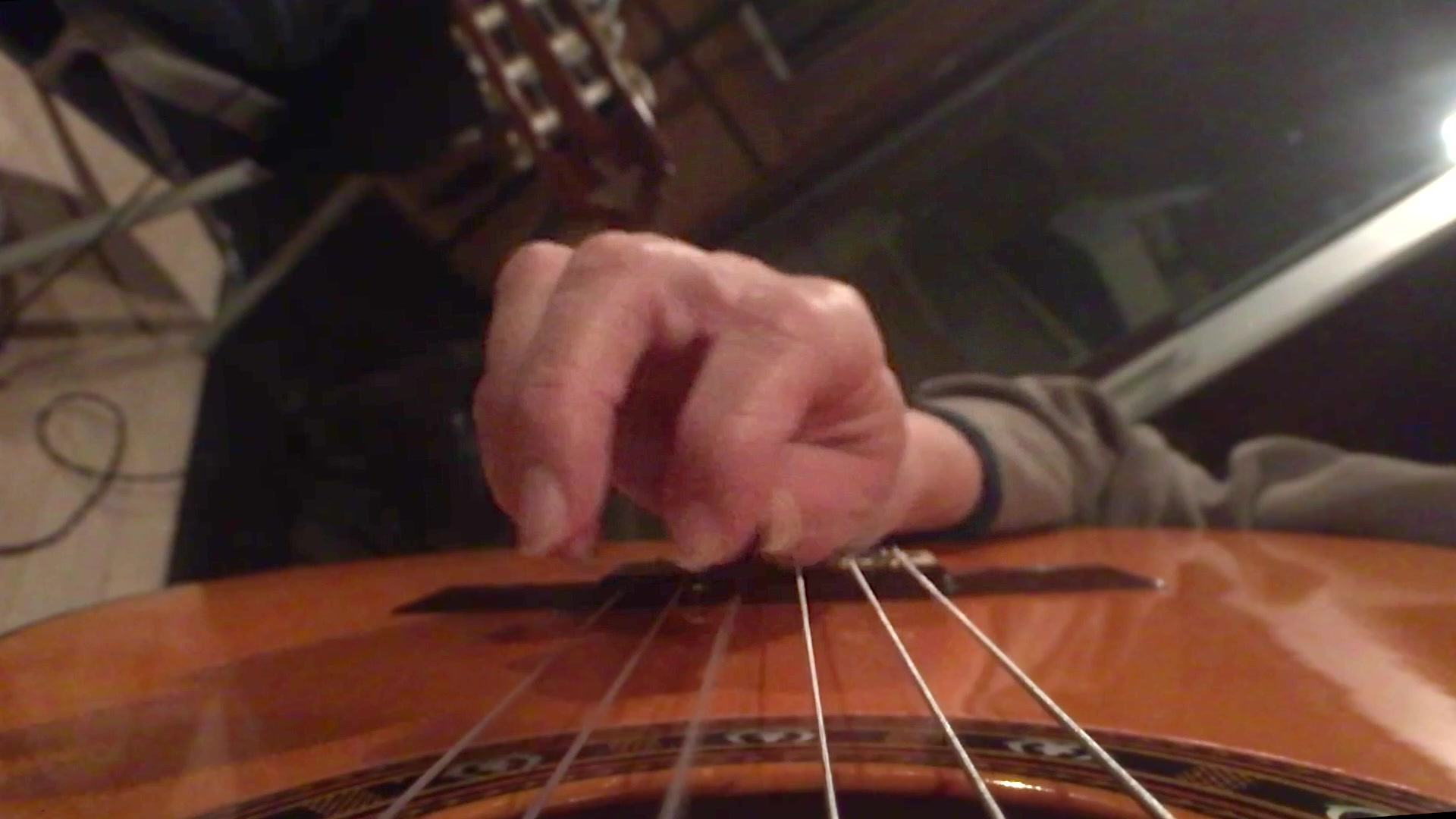Primary Escape
A primary motion is a subconscious attempt to choose a generic default picking motion that is easy to learn, easy to perform, and works for as many of the lines you want to play as possible. If so, this probably explains why, among players we’ve filmed, most primary motions tend to be escape motions.
If you know you’re going to have to switch strings eventually, it only makes sense to choose a primary motion that can do that. We’ve already looked at Andy Wood’s DSX motion, which can switch strings using downstrokes. But there are plenty of others, like Joe Stump’s forearm USX motion which switches on upstrokes:

So when we refer to a player’s primary escape, we’re talking about which type of escape is created by their default joint motion. Andy is primary DSX; Joe is primary USX.
Another reason why primary motions are frequently escaped is that there are more escape motions than non-escape motions. Just because of the way we hold the guitar, some joints like the elbow automatically create an escape motion. Short of tilting the guitar’s body, there’s really no way for it not to. The same is true for the forearm joint, which almost always creates USX motion. So even if you were to choose a primary motion totally at random, you’d be at least somewhat likely to end up with an escape motion as a result.
It’s also worth noting that there is no mechanical “cost” to choosing a primary motion that escapes. Anatomically speaking, an escape motion isn’t really a different type of joint motion. We just use this term as a way of describing how a joint moves relative to the guitar you’re holding. But the motions themselves are just joint motions. Andy’s escape motion is the simplest kind of wrist motion you can make, just the hand moving back and forth. Joe’s escape motion is similarly simple, just the forearm rotating — precisely what it was designed to do. There really isn’t a way to ask these two joints to move that is simpler or easier than the way these players are already moving them.
Trapped Primary Motion
One example of a player who does not have an escaped primary motion is Jorge Strunz. Interestingly, Jorge’s primary motion is actually a trapped wrist-elbow blend:
Jorge’s use of a trapped motion starts to make a little more sense when we realize that his primary string switching method isn’t actually escape motion, but swiping, or playing through muted strings. This is another solution to the degrees of freedom problem. The motor system wants fewer variables, not more. Rather than having to learn a new motion for every type of string change, Jorge just uses this motion the whole time and plays through the strings that are in the way.
In other words, Jorge uses a trapped motion because he’s also using swiping. These two solutions go together because this results in the fewest number of motions to coordinate. By comparison, when we film players who use escape motion for string changes, those players are almost always primary escape players too, because that results in the fewest motions for them to manage.
